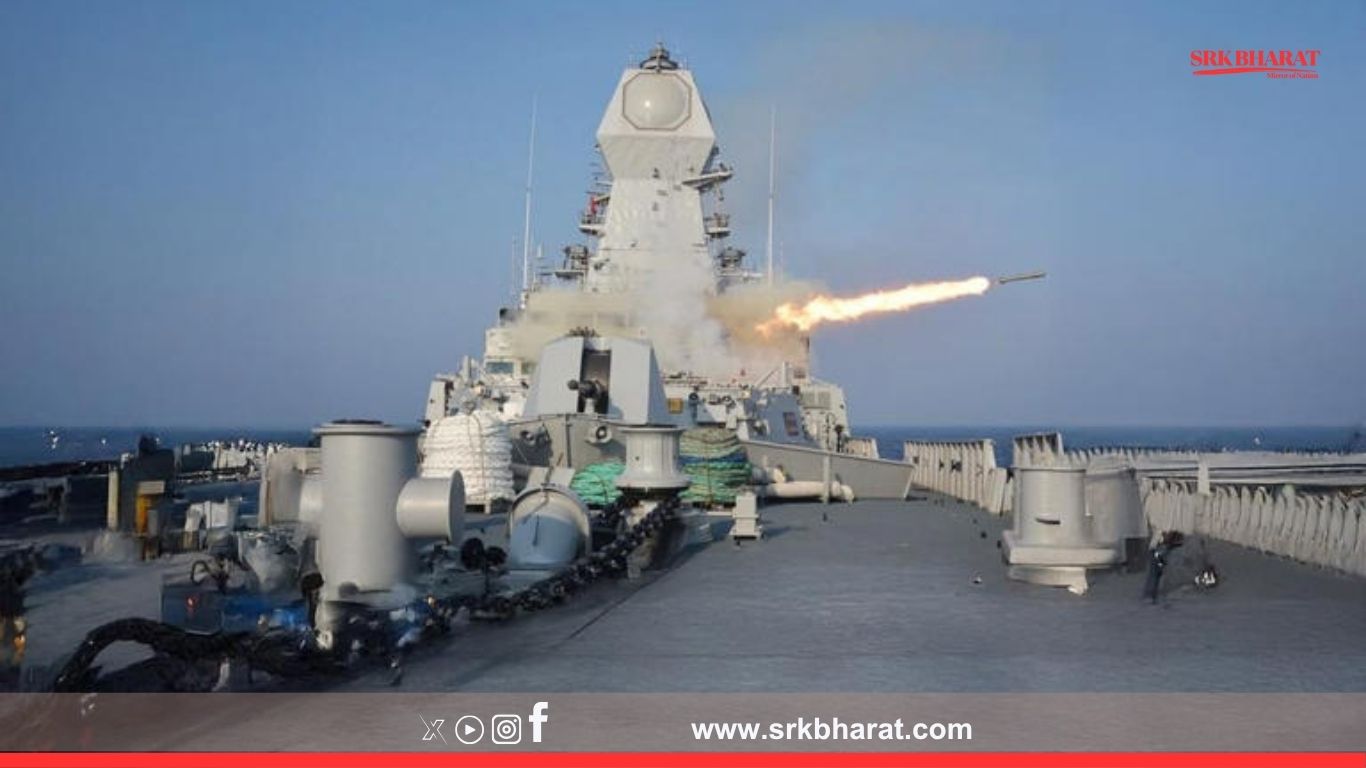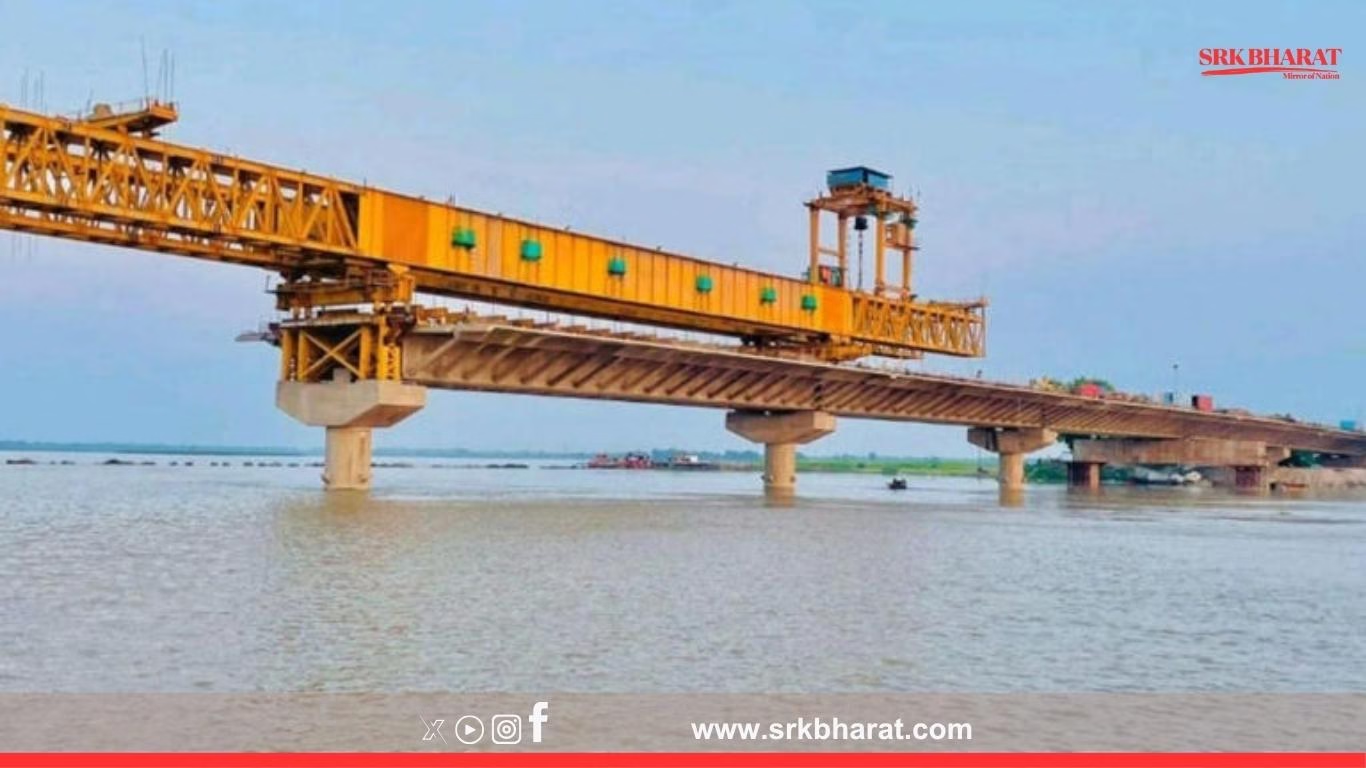The Indian Navy has successfully conducted trials of an indigenously developed Anti-Submarine Rocket system, marking a significant stride towards strengthening its undersea warfare capabilities amid rising regional maritime security challenges. Developed in collaboration with key defence research institutions and public sector ordnance firms, the system is designed to neutralise hostile submarines in coastal and deep-sea environments, enhancing India’s self-reliance in critical naval munitions.
Key Highlights Of The Indigenous Anti-Submarine Rocket System Test
| Parameter | Details |
|---|---|
| Test Location | Eastern Naval Command ranges, Bay of Bengal |
| Developed By | Armament Research & Development Establishment (ARDE) Pune, Ordnance Factory Board, Bharat Dynamics Limited |
| Range | Approximately 5 km (short-range) |
| Purpose | Destroy or incapacitate enemy submarines in littoral and offshore waters |
| Integration | Compatible with indigenously built and upgraded anti-submarine warfare (ASW) rocket launchers aboard frontline warships |
During the trial, the rocket system demonstrated high accuracy, rapid deployment, and stable underwater detonation, meeting all mission parameters.
Strategic Importance For Indian Navy
- ASW Capability Enhancement: Provides an effective deterrent against enemy submarines in the Indian Ocean Region (IOR), where China’s submarine presence has been increasing.
- Indigenous Defence Manufacturing: Reduces dependency on imported ASW rocket systems, in line with the Government’s Aatmanirbhar Bharat vision.
- Fleet Integration Flexibility: The rocket system can be integrated with legacy launchers and modern vertical launch systems across Navy platforms.
- Cost Efficiency: Domestic production ensures lower lifecycle costs and assured supply chains for replenishment.
Technical Overview
| Feature | Specification |
|---|---|
| Calibre | ~240 mm |
| Warhead Type | High explosive anti-submarine warhead |
| Propulsion | Solid propellant rocket motor |
| Fuze Mechanism | Hydrostatic fuze enabling underwater detonation at preset depths |
| Deployment Platform | ASW rocket launchers mounted on frigates, destroyers, and corvettes |
Comments From Defence Establishment
A senior Navy official stated:
“The successful test of the indigenous Anti-Submarine Rocket is a testimony to our robust R&D ecosystem. It enhances our fleet’s layered ASW capability while supporting the vision of self-reliance in defence manufacturing.”
The Defence Research and Development Organisation (DRDO) termed it a “strategic milestone towards indigenous ordnance solutions for maritime security.”
Rising Importance Of ASW Systems
With the Indian Ocean becoming a theatre of great power competition, the Indian Navy has been investing heavily in undersea warfare technologies:
- Sonar Modernisation: Indigenous hull-mounted sonars and towed array sonar systems are being installed on frontline warships.
- ASW Helicopters: Procurement of MH-60R multi-role helicopters with advanced dipping sonars and torpedoes from the US is underway.
- ASW Corvettes: Four Kamorta-class ASW corvettes have been commissioned to bolster coastal ASW patrols.
- Torpedo Programmes: Indigenous lightweight torpedo (TAL Shyena) and heavy torpedo (Varunastra) development and induction continue in parallel.
Global Context: Anti-Submarine Warfare Technologies
| Country | ASW Rocket System | Range |
|---|---|---|
| Russia | RBU-6000 | ~6 km |
| China | Type 75 ASWRL | ~4-5 km |
| USA | ASROC (RUM-139 VL-ASROC) | ~22 km (rocket-propelled torpedo) |
| India | Indigenous ASW Rocket | ~5 km (tested) |
India’s indigenous rocket system is comparable to Chinese and Russian short-range ASW rockets but complements other long-range systems like torpedo-carrying ASROC in Western navies.
Industry Experts’ Opinions
| Expert | Organisation | Comment |
|---|---|---|
| Rear Admiral (Retd) Ravi Sharma | Maritime Security Analyst | “This test is significant given the rising Chinese submarine forays in IOR. Indigenous ASW rockets provide tactical deterrence and operational flexibility.” |
| Lt Gen (Retd) Satish Dua | Former Integrated Defence Staff Chief | “Aatmanirbharta in ordnance production is crucial. ASW systems are essential to protect vital sea lanes and naval assets.” |
| Anurag Garg | Defence Industry Consultant | “Successful domestic ASW rocket testing boosts confidence in local R&D and manufacturing supply chains.” |
Recent Developments In Indian Navy’s ASW Modernisation
| Month | Development | Impact |
|---|---|---|
| April 2025 | INS Kavaratti equipped with indigenous towed array sonar | Enhanced submarine detection range |
| February 2025 | Commissioned MH-60R ASW helicopters | Strengthened aerial ASW capabilities |
| December 2024 | Indigenous heavyweight torpedo Varunastra production ramp-up | Boosted submarine attack capabilities |
Future Roadmap
The Indian Navy is expected to integrate this indigenous ASW rocket system across all major frontline warships as part of its layered anti-submarine defence strategy. Additionally:
- Extended Range Rockets: DRDO is reportedly working on rockets with ranges beyond 8 km for deeper engagement envelopes.
- Integrated ASW Suites: Combining sonars, rockets, torpedoes, and unmanned underwater vehicles for comprehensive undersea warfare.
- Private Sector Involvement: Under Defence Production and Export Promotion Policy (DPEPP), private ordnance firms may participate in large-scale production for Navy and export markets.
Social Media Reactions
- “Indian Navy strengthens its undersea warfare punch with indigenous ASW rockets. Proud moment for defence scientists.”
- “Aatmanirbhar Bharat delivers again. DRDO and Ordnance Factory deserve kudos.”
- “Important milestone as Chinese subs frequent the IOR.”
Conclusion
The successful test of the indigenous Anti-Submarine Rocket system signifies a major leap in India’s maritime self-reliance journey. It bolsters the Navy’s combat readiness against potential submarine threats while aligning with strategic objectives of developing and deploying advanced indigenous defence technologies to secure national maritime interests in an increasingly contested Indo-Pacific region.
Disclaimer
This news article is prepared for general defence and security news dissemination based on official test updates, strategic analyses, and expert commentary. Readers are advised to refer to Ministry of Defence releases and certified maritime security analysts for detailed professional insights before deriving conclusions or framing policy positions related to naval ordnance or undersea warfare capabilities.











